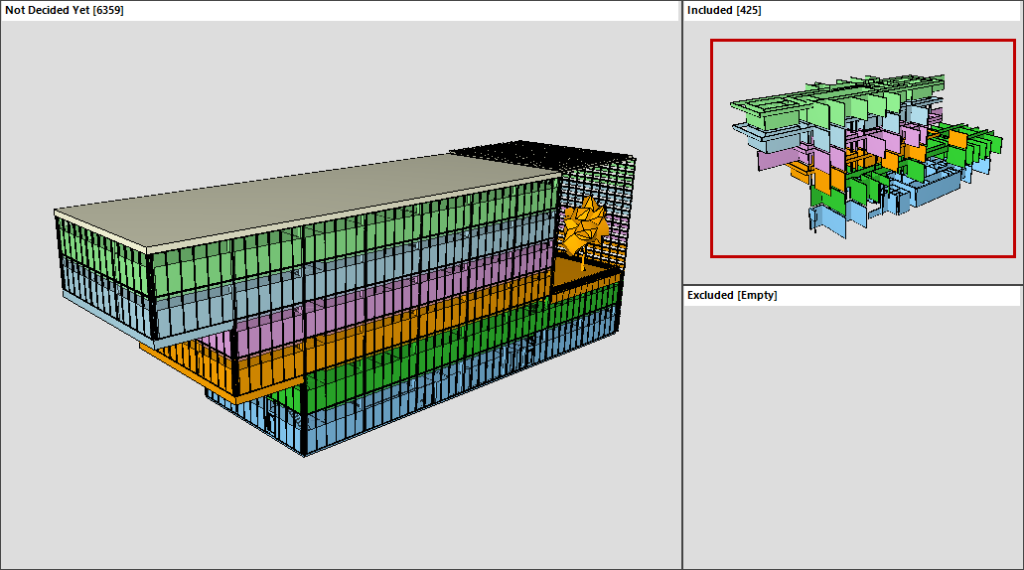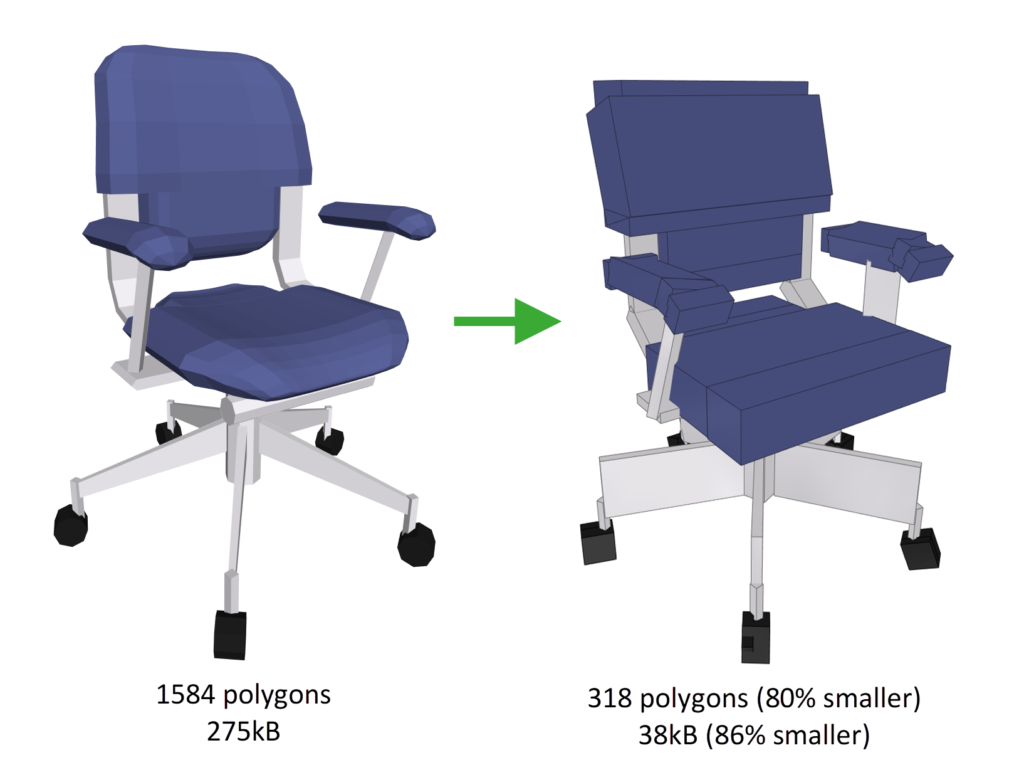04. Clean-up Models
This page may include version-specific information that is no longer current.
The warning is added automatically and may appear on pages containing version-neutral or up-to-date information.
One of the key tasks in any data management is to clean up the data. In Simplebim you can trim the objects, remove unnecessary data and data structures, and even compress and optimize the models in various innovative ways. Note that cleaning the data doesn’t just mean removing unnecessary data. Simplebim also has other tools for standardizing and normalizing the model data. Learn more here.

Reduce File Sizes
BIM models can be very large and Simplebim can help you in different ways to reduce file sizes. This is always a good idea, but especially important when files are moved over networks

File sizes for models depend on two factors; how much actual information the model contains and how this information is structured in the file. In this article we call optimizing the data structures ‘compressing’ and reducing the amount of actual information ‘trimming’. You get the best result by combining these two techniques.
Use the ifcZIP Format
Simplebim lets you export IFC models using the ifcZIP format, which is really just a normal ZIP file with one file, the actual IFC file, in it. Using ifcZIP compresses the IFC file without any changes to it. Depending on the structure of the IFC file the compression ratio can be very significant. However, when the IFC file is opened in another application the memory footprint for that application is identical to opening the original IFC file.
Simplify Geometry
Extra details in the model geometry are useful for architectural visualization, but not always downstream. The extra details can mean unnecessarily long upload and download times. The models can become too heavy to use in a chosen BIM viewer or tool. Usually, you cannot go back to model author tools and simplify the geometry. Only you as the model user know, what should and how to be simplified. Simplebim allows you to do that.

Optimize IFC Data Structures
When you optimize IFC data structures you don’t loose any information, you just use the IFC model in a more efficient way. You can optimize both the geometry and the properties.
Let’s say you have a model with 100 identical chairs. In the IFC model each of these chairs can have it’s own copy of the geometry, which would result in a big file. However, all 100 chairs can also use the same geometry and just define their own location and rotation, which of course makes the file much smaller. What if 50 of the chairs are black and 50 white? Well, the appearances can also be shared.
The same applies to properties. In IFC most properties are independent objects that are referenced by the ‘actual objects’, for example by our chairs. All chairs could have their own copy of the properties, or they could reference the same properties whenever possible. Either way the information content is identical, but sharing is more efficient.
IFC has an ‘implementer’s agreement’ that sharing geometry and properties does not mean that there is a connection between the objects. If we for example import our 50 white and 50 black chairs into an application, and then make one of the 50 white chairs red in that application, it does not mean that all 50 white chairs must also automatically turn red.
Sometimes optimized data structures can have a big effect on the IFC import speeds and the import results. This is because most applications read the IFC models ‘blindly’ and create 100 chair geometries if the IFC model has that many, or just one, if the imported geometry is compressed. The importing application may also create 100 ‘chair types’, or just one.
In Simplebim the optimization of data structures happens automatically. This means that geometry, appearances and properties are all compressed when you export a new IFC file from Simplebim.
Trim the Data
Model trimming is one of the unique core features of Simplebim. When you trim the model you loose information on purpose and you can have many good reasons for doing this. When you are the model author you will want to trim away all data that you don’t want to share with others. BIM authoring applications let you do this to some extent, but with Simplebim you have much better control and visual feedback – and thus confidence in the models you share. When you receive models, you know what data is important to you and you can remove everything else. Unnecessary data just causes unnecessary problems.
The basic trimming in Simplebim involves which objects and properties are included and which are excluded. Only the included objects and properties are exported to IFC. If you are for example an structural engineer, you can trim all of our 100 chairs from the model, which reduces their ‘weight’ in the model to zero.
You can also remove unnecessary classifications, groups and type objects from the model. When you for example determine that a classification in the model is incomplete or otherwise not trustworthy, you should simply remove it to make sure nobody in your organization can use it by mistake.
How to trim models in Simplebim is described in detail here.
Common Misconceptions
Type objects: Sometimes people think that using type objects helps reduce file sizes. Type objects are objects that describe common characteristics of objects. For example if we have 100 chairs with identical geometry, we can have one chair type and 100 occurrences of this type. If the color of the chair was also defining the type, then we would have two type objects with 50 occurrences each; one for white and another for black chairs. However, in reality we can get exactly the same compression by simply having all 100 chairs share their geometry, appearance and properties without any intermediate type objects.